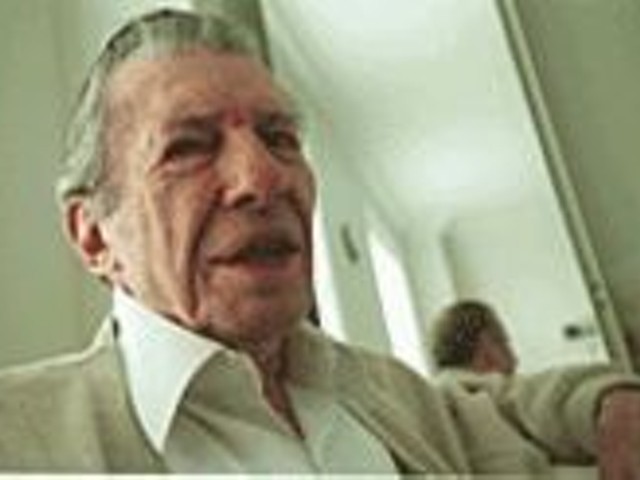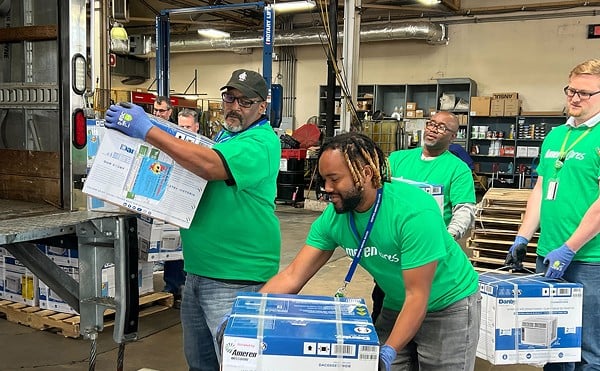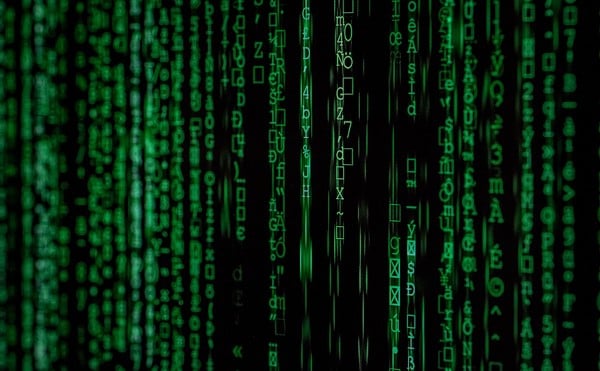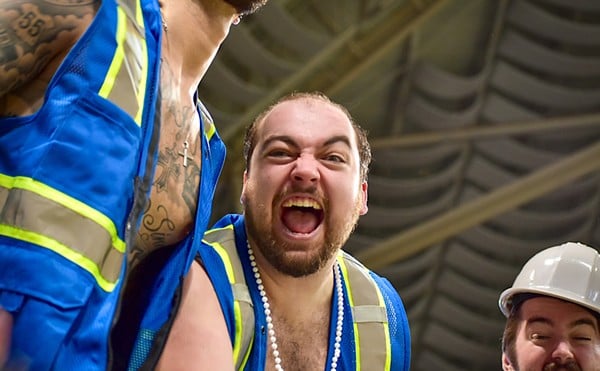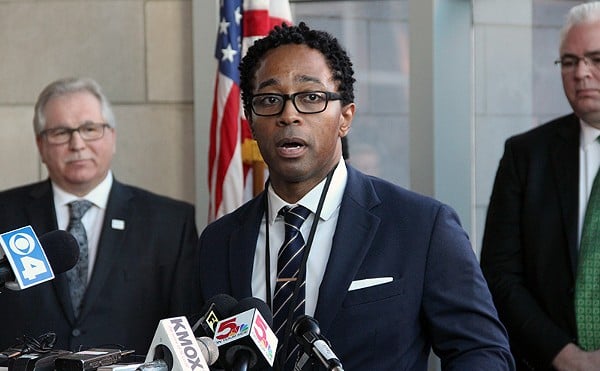Those circumstances have haunted Linda's sister and daughter for years as they grasped for answers about what happened to Linda one April night after her husband said she left for work at the U.S. Government Records Center. And the case has haunted the Vinita Park police lieutenant who has refused to give up on solving the mystery of who killed Linda and then inexplicably dug up her remains so that her skull would be found.
Linda Sherman's relatives and Vinita Park Police Lt. Michael Webb are now hoping some new exposure will bring some kind of break in the case. The case, featured in the Riverfront Times in 1999 [Higgins, "Body of Evidence," RFT, Nov. 17, 1999] will be recounted next month on Lifetime television's Unsolved Mysteries, hosted by Robert Stack. The long-running series encourages viewers to call in with tips or information, and the show's staff says the program has helped solve 280 cases to date. A producer of Unsolved Mysteries says Linda's disappearance will be the lead segment on the show's July 2 episode. The segment includes interviews with Webb; Linda's sister, Fran Miller; Linda's daughter, Patty; and Linda's husband, Don, who, although he maintains his innocence, has long been a considered a prime suspect in her murder. The couple's marriage had long been troubled, and Linda filed for divorce just weeks before she disappeared. Her husband was the last person known to have seen her alive.
Linda was 27 when she failed to report for the evening shift at the government-records center on Page Avenue. Her sister and brother-in-law, Fran and Sam Miller, became concerned when Linda failed to call as usual, then became more worried when they learned she hadn't showed up for work. Both say Linda had been talking to them about leaving Don for good and that she had taken such steps as having her mail forwarded to the Millers' home. Four days after she failed to show up for work, the couple found Linda's yellow VW Beetle parked in a garage at Lambert Airport. There was no trace of her.
Lt. Webb, then a patrol supervisor, was assigned to the missing-person case early on. He checked dozens of leads around the state, but none led to Linda. There seemed to be no breaks at all until five years later, when her skull appeared outside the Casa Gallardo and was reported to the manager by two flight attendants having lunch at a window table. He called police.
Linda's skull was marked as "found remains" and stored at the St. Louis County medical examiner's office for 14 months -- until the mysterious note arrived at the Vinita Park Police Department. The development fueled Webb's determination to solve the case and generated a flurry of new questions. Did Linda's killer send the note? If so, why would he or she go to such lengths to make sure the skull would be discovered and identified?
Over time, Webb pursued a variety of new leads, including soil analysis of the dirt found clinging to the skull. He believes the key to solving her murder may lie in finding where the rest of her remains are buried. That evidence might not only shed light on how Linda was killed but provide clues and evidence against her killer. In 1999, Linda's skull was exhumed from her burial site in central Missouri; FBI agents shipped it to Mercyhurst College in Erie, Pa., where the college's Archaeological Institute has conducted groundbreaking work in applying high-tech archeological principles plus x-rays and powerful electron microscopes to crime scenes. In archaeological theft cases, professors with the college have conclusively linked small samples of soil to the locations where the dirt came from.
Webb hopes that, ultimately, the testing will lead to the site where Linda's remains are buried. The first samples were examined in the fall of 1999. Webb won't go into detail about what those tests revealed, but he says they did eliminate some areas and helped narrow down the likeliest places where the skull was buried before it was later unearthed. He hopes to have additional soil samples tested in the near future.
"I'm very encouraged with the results that have been received and the forensic analysis. It has narrowed the field down," he says. "That aspect of the investigation is still continuing."
Webb admits the case has, at times, been frustrating. "But as long as there is the slightest possibility of resolving this case, it further encourages me." And he is hopeful that the television show will provide new information. "I still believe there are other people out there who have some knowledge of this crime," he says.
Family members are hoping Unsolved Mysteries will bring new information leading to the prosecution of Linda's killer and the location of her remains.
"Hopefully, it will be solved once and for all and we can find my sister's body," says Fran Miller. "I think that's what the entire family would like to see, some kind of resolution to this after all we've been put through."

